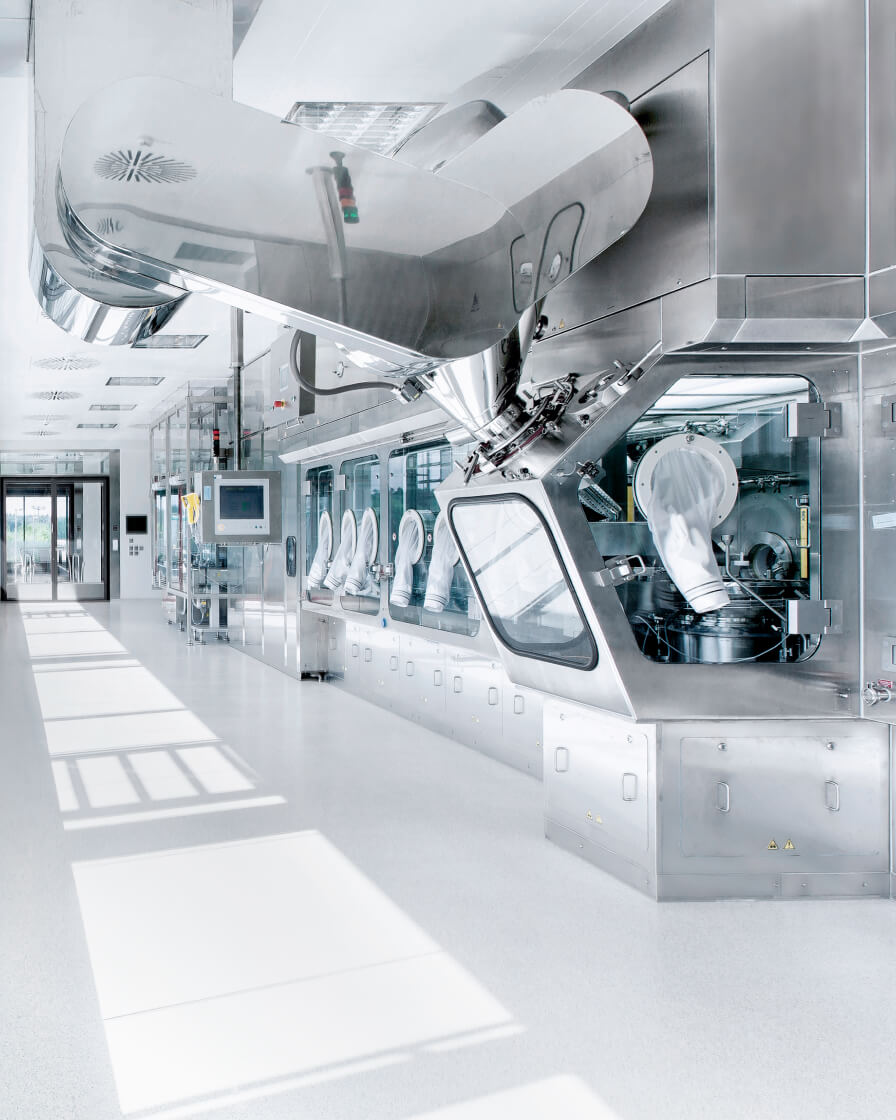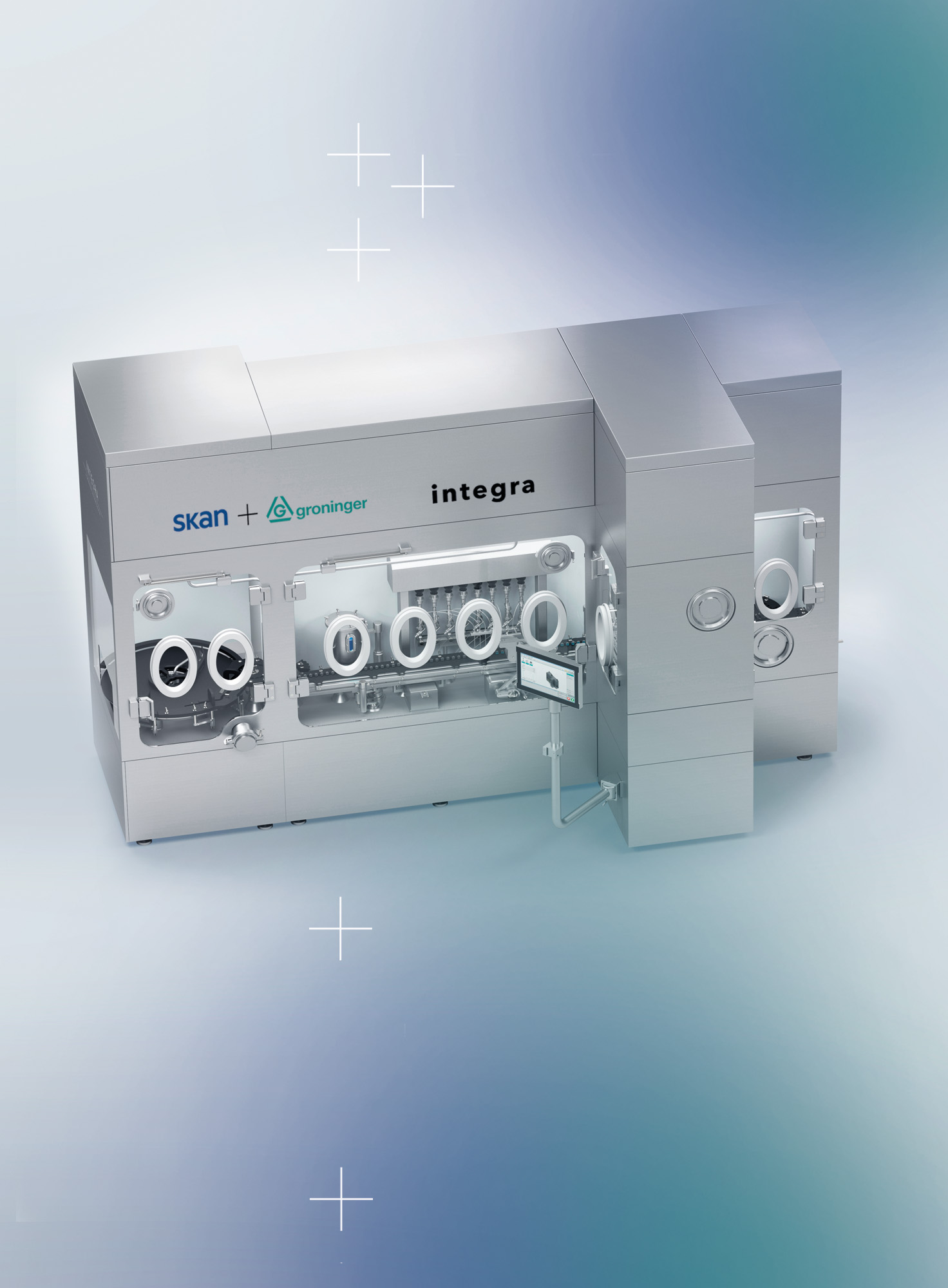Are you looking for an Annex 1 compliant way to transfer your pre-sterilised tubs with RTU components into your isolator filling line? Then look no further than the ebeam technology. With an ever-increasing number of standards and regulatory requirements in pharmaceutical manufacturing, ebeam is the safest transfer and surface sterilization solution on the market, and carries the most approvals from relevant authorities.
Who should consider the ebeam technology?
SKAN ebeam is a safe transfer and surface sterilization system for high-speed sterile pharma production, but also for C(D)MOs who seek a flexible and efficient transfer solution for different products and container sizes. 2”, 3”, and 4” tubs can be processed with only minor adjustments.
The ebeam tunnel is not only available as part of new installations but can be integrated into existing isolator filling lines. This does not only offer you state-of-the-art technology with a small footprint, but also decreases your operational expenditure (OPEX) in the long run.
Why ebeam?
- Efficient, continuous transfer embedded in a compact design
- High-speed production with up to 6 tubs/min
- Assured tub integrity during the whole transfer process (from grade C to grade A)
- >6-log tub surface sterilization
- Widespread acceptance by FDA and other inspection authorities
- «No-risk transfer» for full Annex 1 compliance
- Simple qualification and validation
- Maximum Overall Equipment Effectiveness (OEE)
- Low maintenance requirements and costs
- Significant reduction in operating costs
How does it work?
The SKAN ebeam is designed for transferring pre-sterilised tubs with RTU components such as syringes, vials and cartridges into an isolator filling line. The process is divided into three parts: infeed, surface sterilization and outfeed into the filling line. The air handling is approached from an overarching perspective and in conjunction with the isolator.
More safety for your production
With the ebeam you are on the safe side – in many respects. Not only does the ebeam ensure reliable results at process level, but the operators are fully protected.
Authorities love the ebeam
The transfer process of containers and materials into the A-zone is a critical process with risks – but not with the SKAN ebeam. Approval authorities recognize this.
Comprehensive service package
SKAN stays at your side during the whole lifecycle of the system and guarantees the reliable supply of spare parts and emitters. We provide you with the full-service package to keep the equipment reliable and the use comfortable. As SKAN offers you the ebeam transfer system and isolator from one hand, the technology is optimally integrated into your filling line and can be serviced together.



